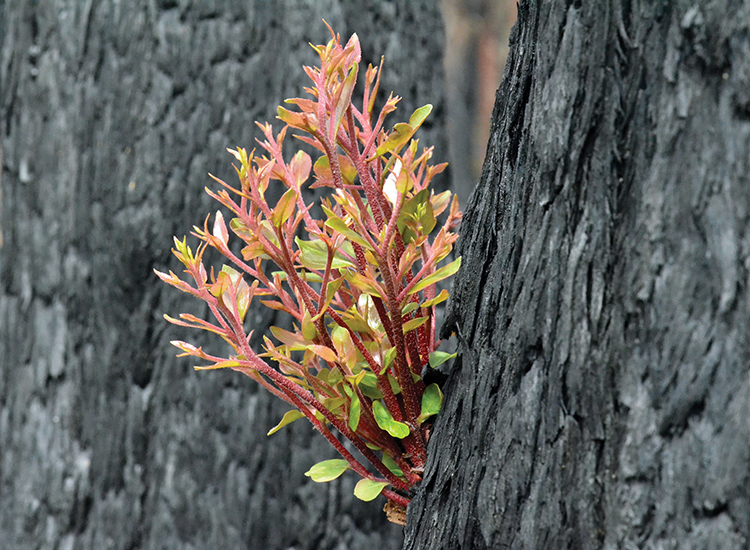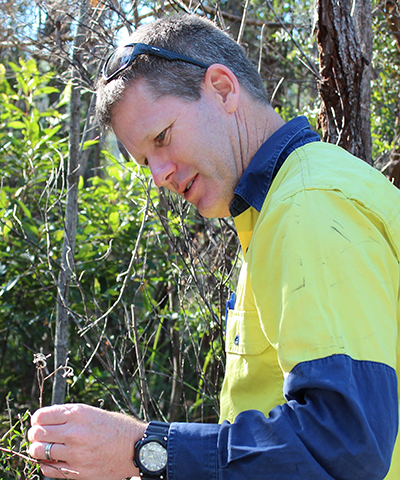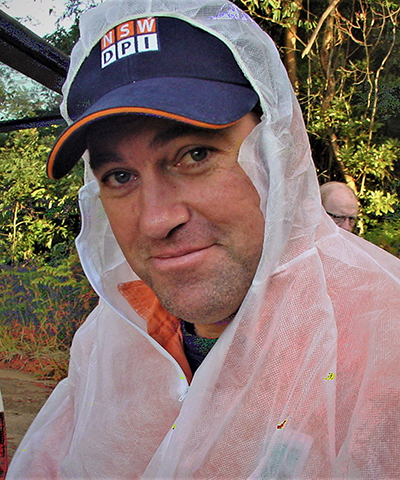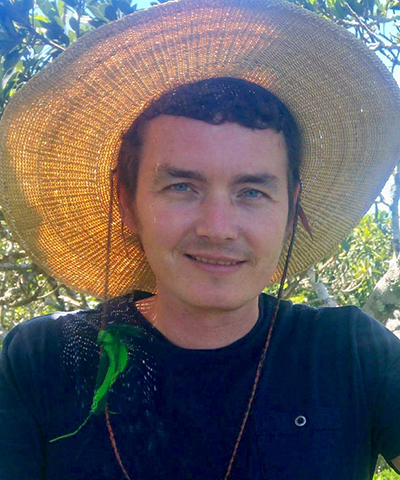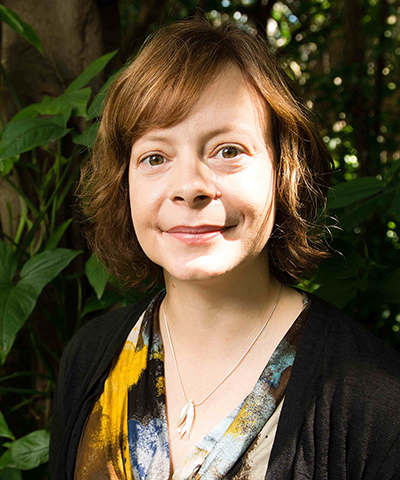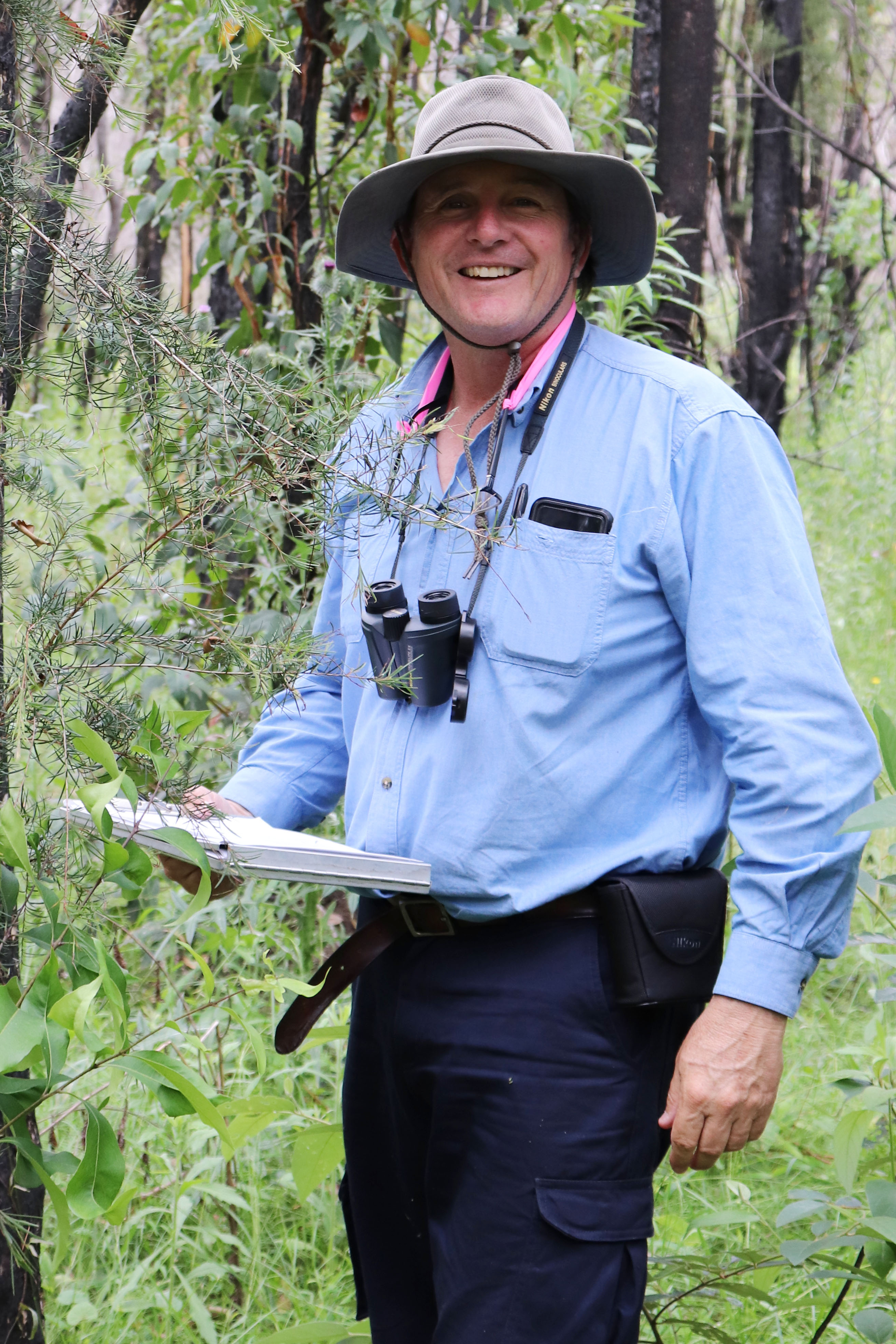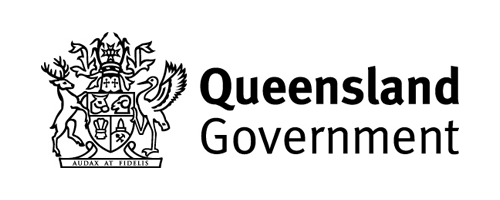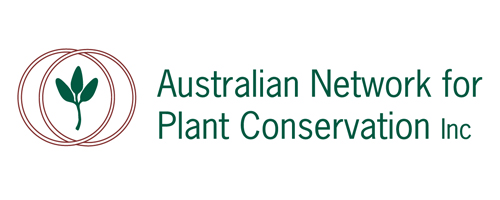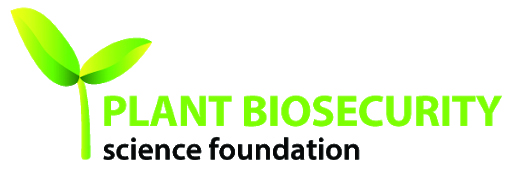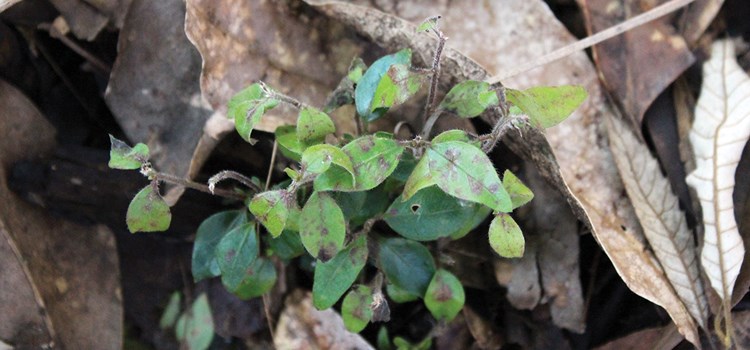
Project: 8.3.5
Fire and rust: The impact of myrtle rust on fire regeneration
Project Leaders: David Keith , Geoff Pegg
Research in Brief
Fire is important to Australia’s native flora. However, the development of new regrowth and seedling emergence en masse after the 2019–20 wildfires is creating ideal conditions for the spread of the exotic and deadly fungus, myrtle rust (Austropuccinia psidii). This project aims to determine the impact of myrtle rust on regenerating Myrtaceae and the susceptibility of species to the rust’s infection. We will survey fire-affected regions in New South Wales and Queensland, including reserves in the Gondwana Rainforests of Australia World Heritage Area, to capture data across a range of sites and species. We will establish short-term impact assessment plots at selected sites and record data on disease progression/species decline.
Why is the research needed?
This project aims to determine the impact that myrtle rust (caused by the rust fungus Austropuccinia psidii) is having on the regeneration of Myrtaceae following the 2019–20 wildfires in a range of ecosystems across Queensland and New South Wales.
Myrtle rust is affecting the regeneration of many species causing death of reshoots and seedlings in these crucial months following the wildfires. Periods of wet weather that have promoted regeneration in fire affected areas also create ideal conditions for development and spread of myrtle rust.
The project will identify species that are showing susceptibility and the regeneration forms (re-shoots/seedlings) that are affected by myrtle rust. We will determine the effect of repeated infection on species recovery/survival for species highlighted in priority lists, including bushfire-affected threatened plants.
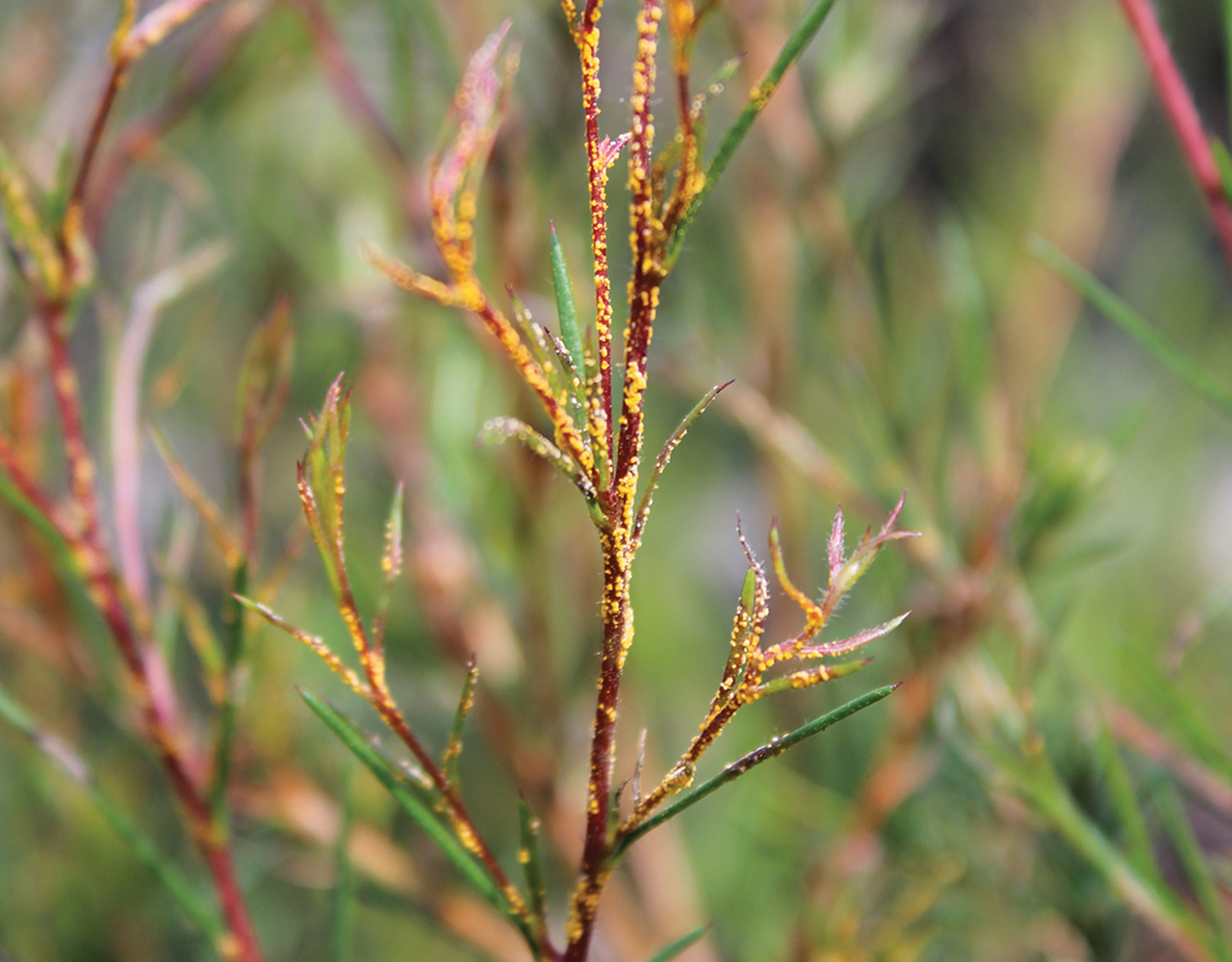 Myrtle rust infection on M. nodosa reshoots. Image: G. Pegg DAF, Queensland
Myrtle rust infection on M. nodosa reshoots. Image: G. Pegg DAF, Queensland
How will the research help?
The project will focus on species impact, providing data for informing conservation risk assessments, particularly for species that are severely impacted. It will also provide impact information on Myrtaceae currently listed as threatened and are present in survey areas. We will record the locations of species to help guide the collection of seeds and other genetic resources for conservation and regeneration activities.
Outcomes from this study will be used to inform policy and guide conservation strategies for Myrtaceae affected by myrtle rust. The findings will also maximise the chances for recovery of affected species and/or implementation of conservation strategies for species at greatest risk of significant decline.
Information from surveys will be assessed to determine climatic influences on disease severity and impact, comparing coastal to inland environments.
What research activities are being undertaken?
The project will involve on-ground myrtle rust identification; vegetation condition assessments in relation to fire damage and the impact of myrtle rust; and training and capacity-building for land managers.
We will conduct surveys across a wide range of ecosystems to capture information on species susceptibility and the influence of climatic factors on the incidence of the disease and severity of impact. Where possible, we will link survey sites to post fire vegetation condition assessments.
Disease incidence and severity data will be collected for a range of species and locations where rust is likely to be most damaging. Preliminary surveys suggest species not normally seen as susceptible in undisturbed sites are becoming infected and impacted by myrtle rust. To assist with species conservation and/or restoration planning, we will also capture data on species populations and/or individuals free of disease and possibly resistant to myrtle rust.
During the surveys, we will record impacts on reshoots and seedlings of a range of species. Additional site data collected will include fire severity, vegetation type and species composition. Where possible, species present across these different environments will be targeted (e.g., Melaleuca nodosa, M. quinquenervia, Eucalyptus pilularis).
We will establish, or recommend the establishment of, monitoring plots
in sites based on survey results. The focus of these will be on species we have identified as likely to be at higher risk, to assess the impact of repeated infection of myrtle rust on post-fire plant regeneration.
Finally, to assist in expanding the capacity to report on myrtle rust impacts, we will provide in-field myrtle rust identification and assessment training workshops to regional Parks and Wildlife staff, landowners and land care groups.
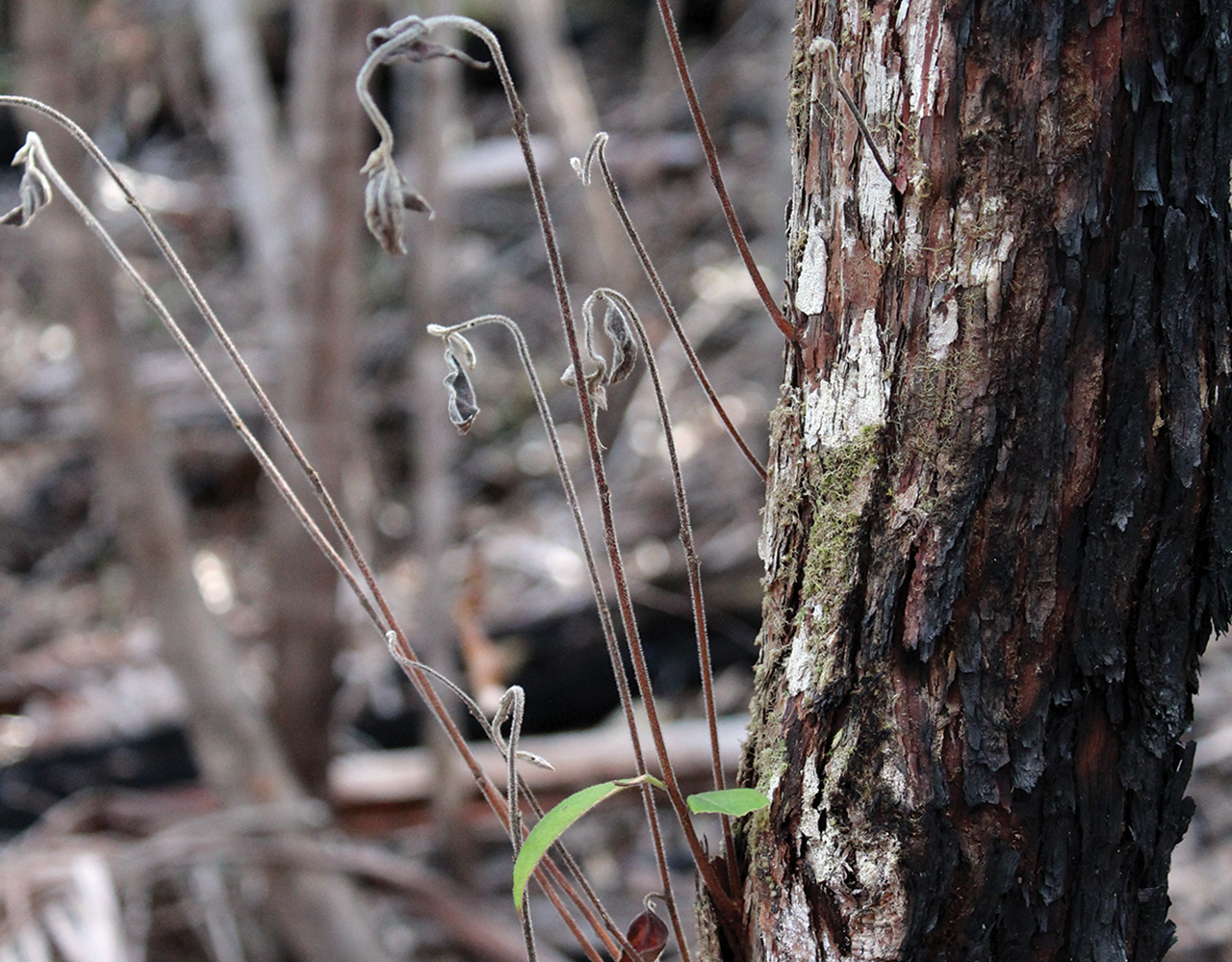 Myrtle rust infection on Rhodamnia rubescensreshoots. Image: G. Pegg DAF, Queensland
Myrtle rust infection on Rhodamnia rubescensreshoots. Image: G. Pegg DAF, Queensland
Who is involved?
This project is a collaboration between researchers at the Queensland Department of Agriculture and Fisheries, the New South Wales Department of Primary Industries, the University of New South Wales, Queensland University of Technology, the Australian Network for Plant Conservation and technicians and botanists drawn from the private sector.
Where is the research happening?
The research is taking place across a number of sites and ecological communities in Queensland and New South Wales:
- reserves within the Gondwana Rainforests of Australia World Heritage property (Lamington and Main Range National Park, Washpool and Gibraltar National Park)
- sites in both states featuring Lowland Rainforest of Subtropical Australia Threatened Ecological Community
- coastal heath and woodland environments in New South Wales and Queensland (Bundjalung and Cooloola/Noosa National Parks/K’gari (Fraser Island))
- environments on the south coast of New South Wales affected by fire.
When is the research happening?
The project will run from May 2020 to April 2021.
Further information
For more information please contact:
Geoff Pegg - Geoff.Pegg@daf.qld.gov.au
OR
David Keith - David.keith@unsw.edu.au
Top image: Dieback of Uromyrtus australis reshoots, caused by myrtle rust. Image: G. Pegg DAF, Queensland
